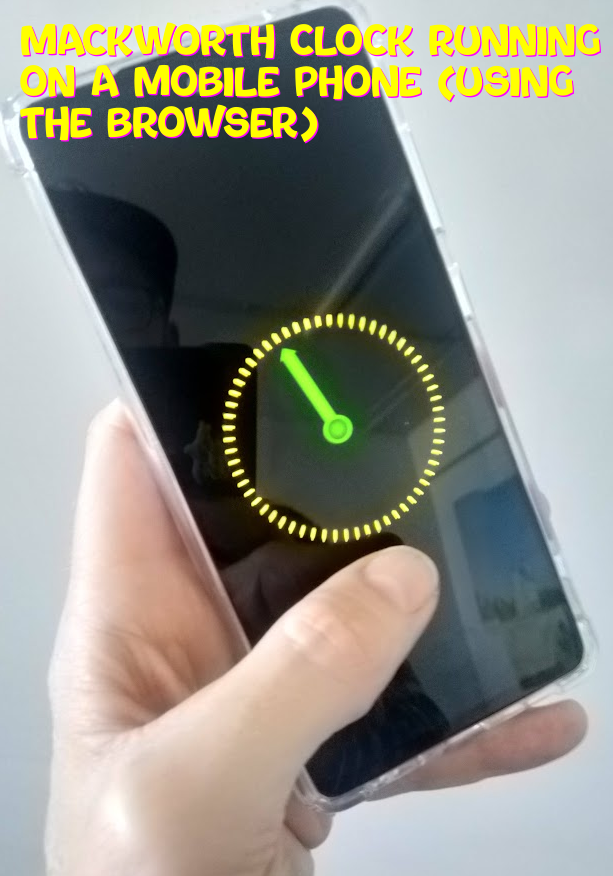Introduction
The Mackworth clock test (Mackworth, 1948) assesses people’s vigilance. Vigilance is a state of concentration that helps people to detect specific events when not much is going on.
For example, in real life, a guard must be vigilant when looking after something. That can be hard when you are standing guard for hours, when it is at night and it is quiet. Vigilance is difficult because it gets quite boring, because typically nothing happens.
| Vigilance is necessary in a number of jobs, such as guards and air traffic controllers. |
The Mackworth clock test was originally designed as a physical real device (looking like a clock), although computer based versions have later been developed (Lichtstein et al., 2000).
About this implementation
Watch the clock hand move around. The whole task takes five minutes, but for real experiments, you should do it for much longer. It is an endurance test!
| This task works really well on mobile phones. You can even do it with one hand, using your thumb to touch anywhere when there is a larger clock hand jump. |

When the hand jumps more than normally, click the mouse. Best to click the mouse on the clock center. You will get an error signal (red light) when you click the mouse when there was no unusual clock hand jumping or when you failed to detect it. You get positive feedback (green light) when you press click the mouse when needed.
| Of course, you can do it on a touch screen as well and just use your finger. |
Note that you must respond quickly (within 1 s).
| Also note that the likelihood of a "jump" of the clock hand is in this implementation around 10%, whereas in the real task it is just over half a percent!!! You can easily change this in the code by changing the line with the instruction with the random number. Change it from set &randomnumber random 1 10 to set &randomnumber random 1 150. |
| You can easily adapt this task, you can change the number of steps in a circle, the speed, etc. |
Run the demo
| In this example, you will |
Data output file
| In PsyToolkit, the data output file is simply a textfile. The save line of the PsyToolkit experiment script determines what is being saved in the data output file. Typically, for each experimental trial, you would have exactly one line in your text file, and each number/word on that line gives you the information you need for your data analysis, such as the condition, response speed, and whether an error was made. |
Meaning of the columns in the output datafile. You need this information for your data analysis.
| Colum | Meaning |
|---|---|
1 |
reaction time. should be 1000 most of the time (that is the "timeout" time) |
2 |
status (should be 3 most of the time, that is, no key was pressed and the status is "timeout") |
3 |
the current position of the hand (in tenth of degrees) |
4 |
a random number between 1 and 10 (if it is 10, there is a bigger jump of the clock hand) |
5 |
value 1 means this trial had a correct detection (only relevant if column 4 has value 10) |
6 |
value 1 means that this trial had an incorrect detection (i.e., space bar pressed, even though there was nothing to detect) |
7 |
value 1 means missed detection (the participant failed to press space bar |
Important: If you analyze the data, you basically can just only use the last line of your data file, which contains just three numbers:
-
The total number of ticks
-
The missed ticks (failure to click when there was a bigger jump)
-
The wrong clicks (you clicked even though the jump was normal)
In your analyze section, just include or remove the last line, depending on how you want to analyze your data.
Download
| If you have a PsyToolkit account, you can upload the zipfile directly to your PsyToolkit account. Watch a video on how to do that. If you want to upload the zipfile into your PsyToolkit account, make sure the file is not automatically uncompressed (some browsers, especially Mac Safari, by default uncompress zip files). Read here how to easily deal with this. |
Further reading
-
Mackworth, N. H. (1948). The breakdown of vigilance during prolonged visual search. Quarterly Journal of Experimental Psychology, vol. 1, pp.6-21
-
Lichstein, K. L., Riedel, B. W., & Richman, S. L. (2000). The Mackworth clock test: A computerized version (statistical data included). The Journal of Psychology.
